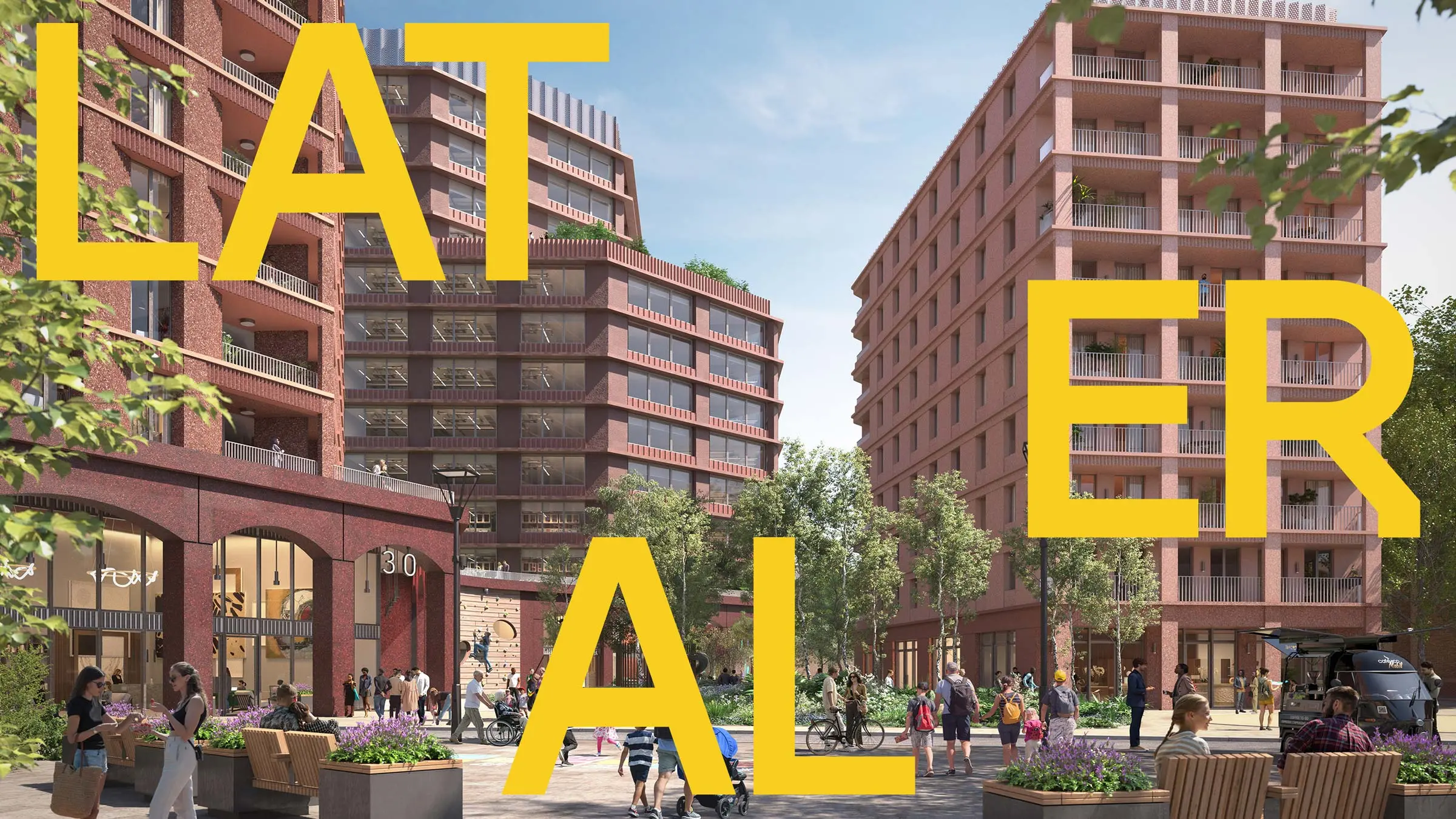Insights
Branding as social infrastructure in real estate

ESG (environmental, social and governance) has become a shorthand for responsibility in development, but in practice it’s the environmental and governance aspects that get all the attention. The social dimension remains the hardest to grasp and the easiest to overlook.
Yet it’s the ‘S’ that can turn compliance into connection – the bridge between performance and purpose.
Brand strategy is a surprisingly powerful tool for this. Behind the logo, the eye-catching hoardings and the glossy marketing materials should sit an authentic, unifying story – a shared narrative that brings architects, developers, occupiers, investors and communities together.
Taking brand from ‘veneer’ to ‘blueprint’
All too often branding comes in late – after planning approval, sometimes even once construction has started. At that point, it risks becoming a superficial sticker, a sales veneer rather than a guiding principle.
If it’s part of the picture from the start, though, everything changes.
Bring brand into the mix early and it can help shape the development itself, informing design, interiors and public spaces. Instead of being an afterthought, brand becomes part of the foundation, guiding decisions, shaping experiences and ensuring the authentic story is seen and heard at every stage.
Think of it more as social infrastructure than marketing. A practical tool for keeping everything aligned, especially around participation and shared purpose.
It can make community consultations more genuine, too, shifting them from box-ticking to actually listening. It can help design teams see through the eyes of future users. And it can ensure that what gets built reflects the character and aspirations of its place.
When that happens, the brand isn’t decoration, it’s the blueprint for meaningful social outcomes.
Proof in action: Botanic Place
Cambridge’s Botanic Place is a live example of what happens when brand thinking is embedded from the very start, shaping not just how a place looks and feels, but how it grows and connects with its community over time.
Still more than two years from completion, Botanic Place is an evolving story. Our collaboration with the development team continues as the project takes physical form beside Cambridge’s Botanic Garden – a setting that inspires every aspect of the narrative we’re helping to build. From the outset, we set out to tell a story of intelligent design, sustainability and belonging. The brand draws on nature’s energy, form and growth, creating an identity for what will be a living, breathing destination.

The synergy between the built and natural worlds defines the architecture and the brand. The logo, inspired by cell division, nods to Cambridge’s scientific legacy, while the organic typeface and colour palette express community, creativity and innovation.
What’s particularly rewarding is seeing how this brand thinking has already influenced key real-world decisions – long before the doors open. The choice to retain and revive the much-loved Flying Pig pub, for instance, rather than demolish it, became a powerful gesture of authenticity and respect. It showed that this is a development grounded in its context – a community-first mindset that builds trust and demonstrates social value in action.
In Botanic Place, we’re witnessing brand thinking not as a finishing touch, but as a guiding principle shaping the journey. Proof in progress of how early, integrated creative thinking can help a place earn its meaning before it even opens.
Social value as strategy: Lateral
Real estate firm Lateral takes a similar approach. They value legacy over short-term gain. During our rebrand we kept that philosophy at the core: people, place, prosperity – a promise that commercial success and social impact are inseparable. Like us, they believe one fuels the other.
By having the brand strategy at the centre, Lateral turns social value into a tangible asset. It becomes the language that links investors and occupiers with the communities they serve – proof that doing well and doing good can be the same thing. It’s a fitting perspective for a company that truly lives up to its name – taking a lateral view of what property, community and value can mean.
Rob Beacroft, Co-founder at Lateral, summed up the impact when he said:
“Real estate goes beyond the physical – it’s about creating living ecosystems. Our entrepreneurial approach builds for the long term, with brand as the bridge between purpose, community and enduring value.”
The case for early brand integration
People are increasingly wary of generic developments going up around them, seemingly with no concern for their thoughts on the matter. And it’s no surprise – regens can provoke resistance if they feel disconnected from local identity.
Branding helps bridge that gap.
When applied early, it articulates a project’s purpose, builds trust and shows that development can enhance rather than erode community life. It connects design intent to lived experience, helping people see not just new buildings, but a shared future.
That’s the real ‘S’ in ESG: synergy.
Branding transforms social intent into tangible outcomes, aligning people, place and purpose from the outset. Where trust and connection are rare, that synergy may just be a developer’s most valuable asset.